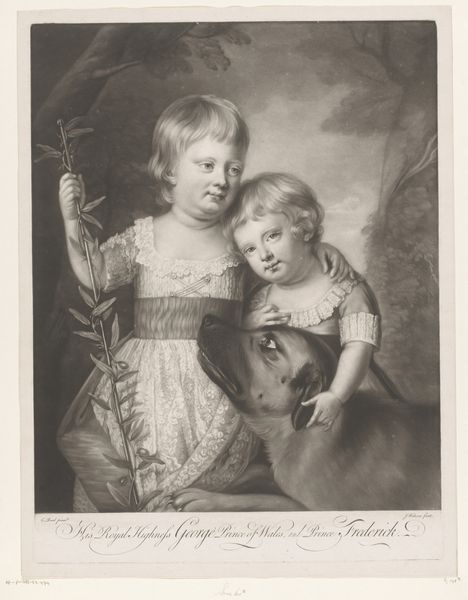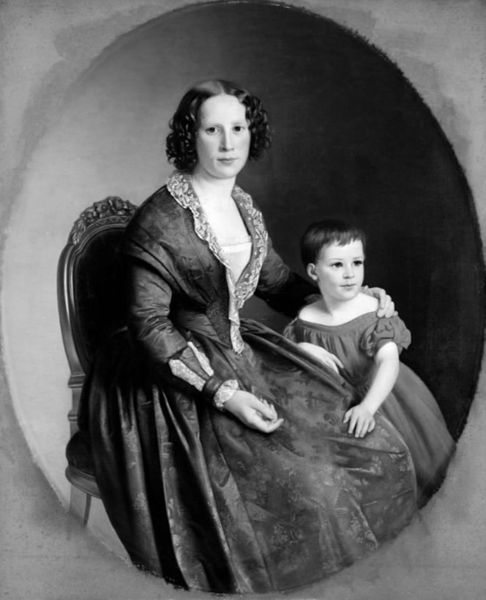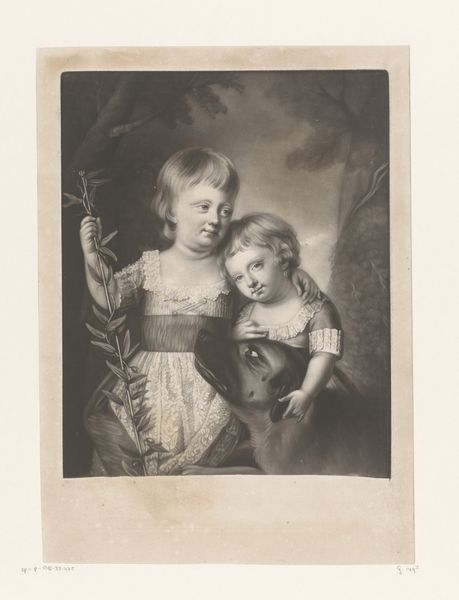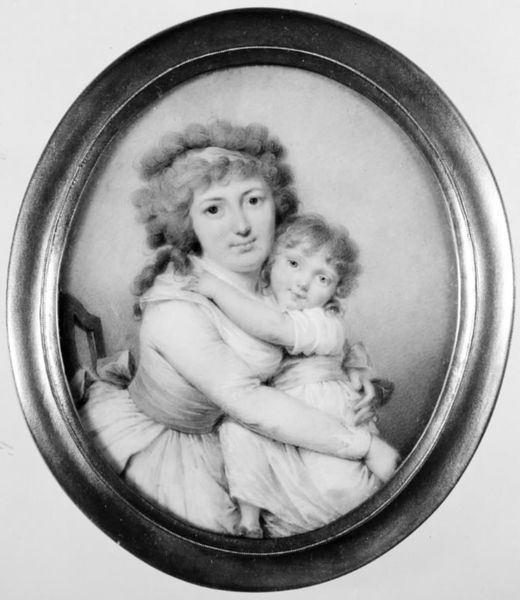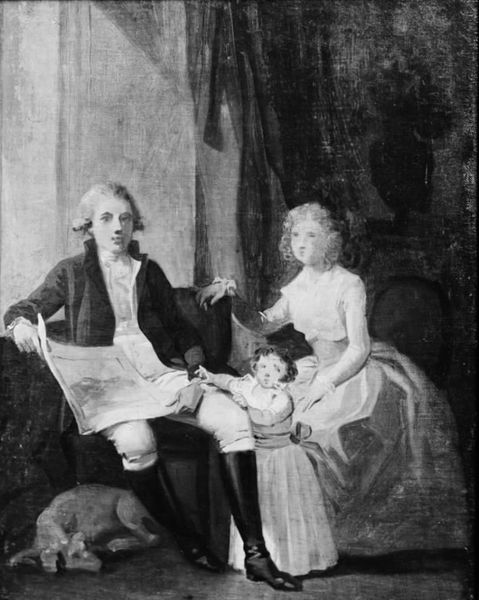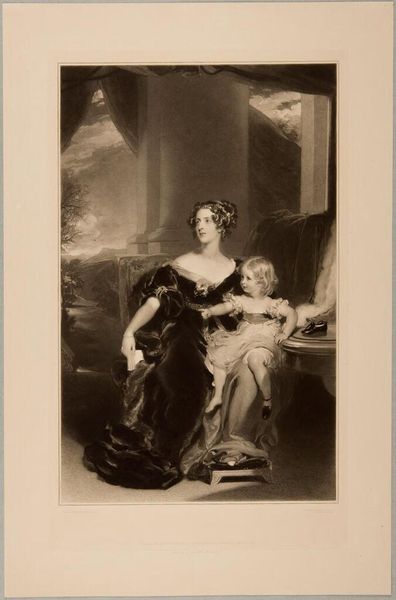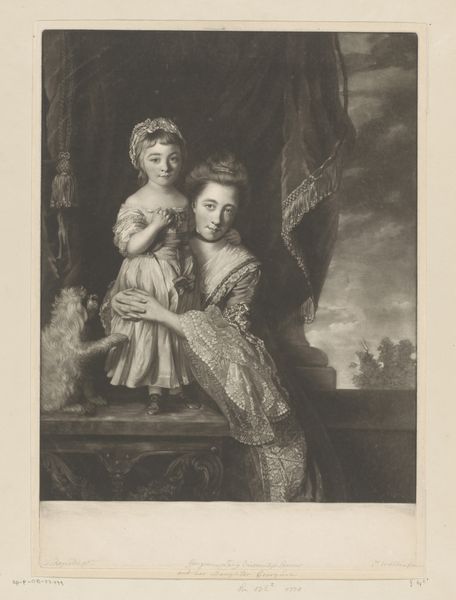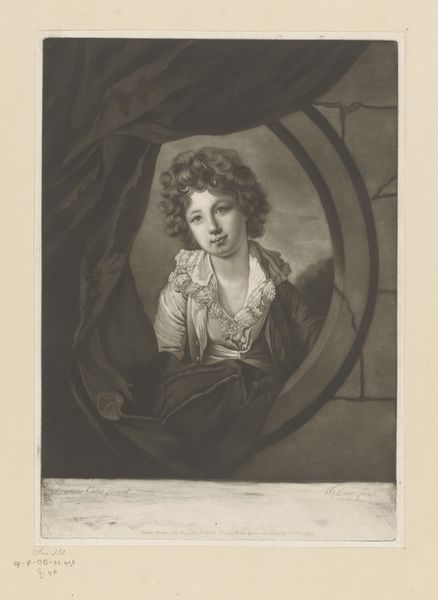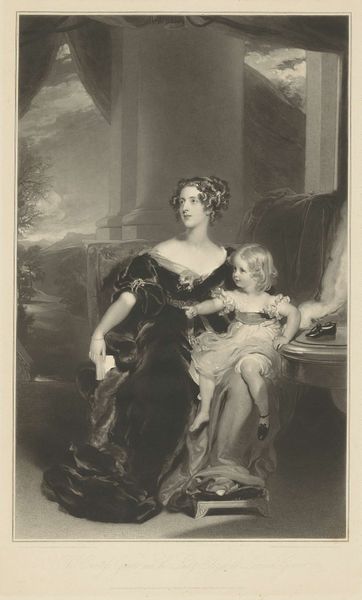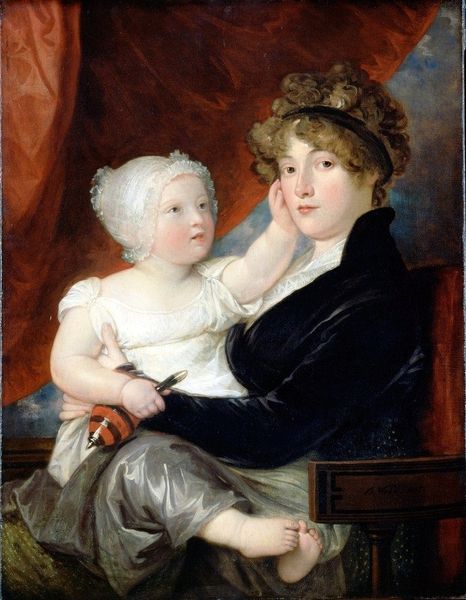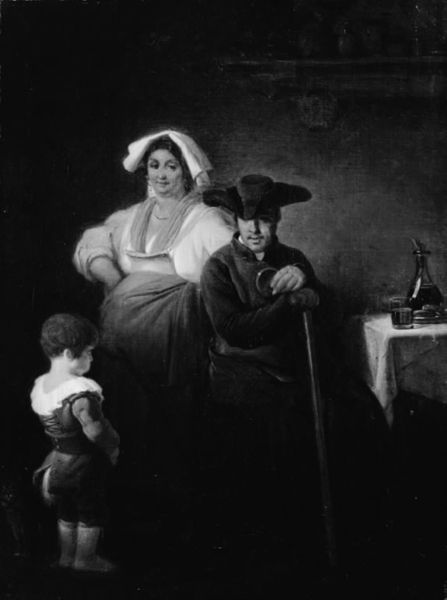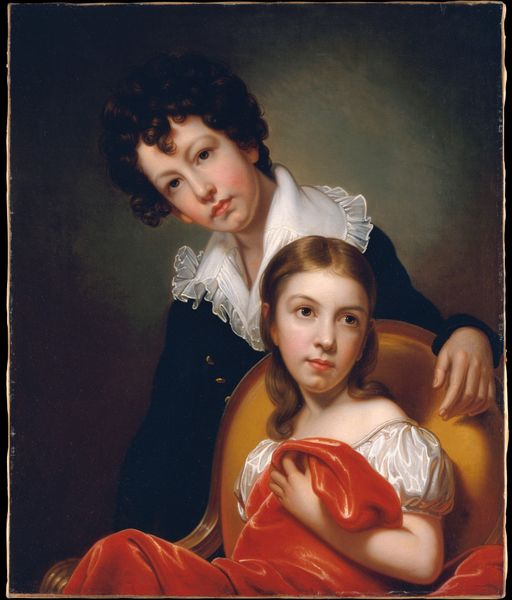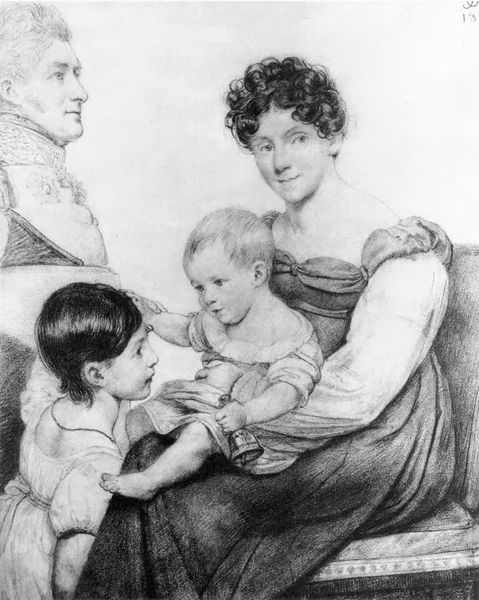
painting, canvas
#
neoclacissism
#
painting
#
canvas
#
group-portraits
#
black and white
#
monochrome photography
#
genre-painting
#
academic-art
#
monochrome
#
monochrome
Dimensions: 138.5 cm (height) x 100 cm (width) (Netto)
Editor: This is "Two Youths with a Dog" painted in 1797 by C.A. Lorentzen. It’s rendered in oil on canvas, and is currently in the collection of the SMK. There’s a compelling stillness about it, despite the apparent casualness of the figures' poses. What do you notice when you look at this piece? Curator: The immediate impact is the monochrome palette, restricting the reading to value, line and form. The composition utilizes a triangular structure with the two figures and the dog, directing the eye. The artist meticulously models the drapery and skin, adhering to Neoclassical ideals. Editor: I see what you mean. It’s almost photographic in its attention to detail, despite being monochrome, with a dog creating the third apex, unifying it all. Are you drawn to anything else formally? Curator: The spatial relationships demand attention. Note the sharp contrast of textures - the smooth skin against the rough coat, velvety jackets with crisply starched ruffle collars, and a neutral background creates distinct visual weights within the frame, further balanced by tonal uniformity and simple modeling that aligns perfectly with the era’s interest in clarity and order. It's carefully structured; even the dog’s positioning reinforces the stability. Editor: So, it is all about the shapes? Curator: Not exclusively, no. Line directs our perception within each delineated area; that gaze is held at bay by that plane of value. Look closer and tell me more, if that is your thinking... Editor: Well, I think I assumed value creates spatial order as much as shape does... I hadn't considered them to be separate factors. The subdued palette and clear structure really emphasize the seriousness and studied composition typical of the time, perhaps overshadowing emotional expression. Curator: Precisely. Reflecting on this portrait, I’m struck by the degree to which the artist manipulated formal elements to achieve that precise effect of balanced, yet reserved dignity, without emotional release or the burden of subjective experience. Editor: And I was only beginning to focus on how all this visual organization, by way of value and careful formal modelling, achieves a very particular emotional effect, something I might easily miss otherwise.
Comments
No comments
Be the first to comment and join the conversation on the ultimate creative platform.

